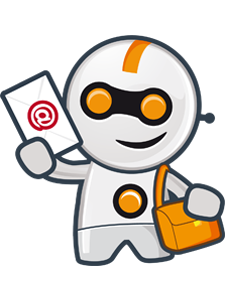Marketing to everyone is the fastest way to convert no one.
There's no such thing as an "average" subscriber. Trying to write emails that appeal to everyone on your email list is like sending one text to every contact in your phone – your grandma, your accountant, your gym buddy – and expecting them all to click "buy now".
That's why email list segmentation exists. And no, it's not something only big companies with data teams and six-figure software can do. If you're sending marketing emails, you shouldbe segmenting. Period.
Start with the Basics
Most marketers begin with demographic segmentation. It's simple, useful, and gets you part of the way there.
- B2C: Age, gender, income, general location.
- B2B: Job role, company size, level of decision-making.
This is your starting point – but it shouldn't be the end.
Behaviour Is Better Than Guesswork
The real gold comes from what subscribers actually do. Actions give you more insight than forms ever could.
- A new subscriber clicks a specific link? Segment.
- They browse but don't buy? Segment.
- They always go for discount codes? You know what to do.
Every open, click, and purchase tells you something. Use it to group them accordingly.
Here's what behaviour-based segmentation might look like –
- Opens every promo? Keep sending them.
- Ignores product launches but reads educational content? Put them on your value-first email list.
- Buys once, never again? Trigger a reactivation sequence.
These are signals – not noise.
 What You Get When You Segment (Smart) Rather Than Stagnate?
What You Get When You Segment (Smart) Rather Than Stagnate?
Segmentation isn't busywork. It's how you make your emails actually work.
Done right, it gives you –
- Higher open and click-through rates
- Lower unsubscribe rates
- Better deliverability (no more spam folder limbo)
- More sales
- A better experience for your audience
People are more likely to respond when your message feels like it was meant for them – because it was.
Real Examples You Can Use
You don't need advanced AI. Just pay attention.
- Discount hunters: Always go for the lowest-price option? Create a deals-only segment.
- Mid-range buyers: Like quality but won't splurge? Emphasise value and trust.
- Premium shoppers: Tend to grab the high-end offer? Personalised recommendations and exclusives are your best bet.
The goal is to stop sending the same message to everyone. Instead, send the right message to the right people at the right time.
When to Start Segmenting?
Immediately.
If you're an SME just getting started, it's tempting to put segmentation on the back burner. What, with everything else happening? But that's a mistake. Segmenting email lists from day one means you'll get cleaner data, faster results, and better insight into who your subscribers really are.
And you don't need fancy tools. Most email marketing platforms have basic segmentation built in.
To recap, email list segmentation isn't an advanced feature. It's a must-have from the get-go, and the moment your list hits double digits. The sooner you start, the better your targeting. The better your targeting, the more your emails perform. Simple.
